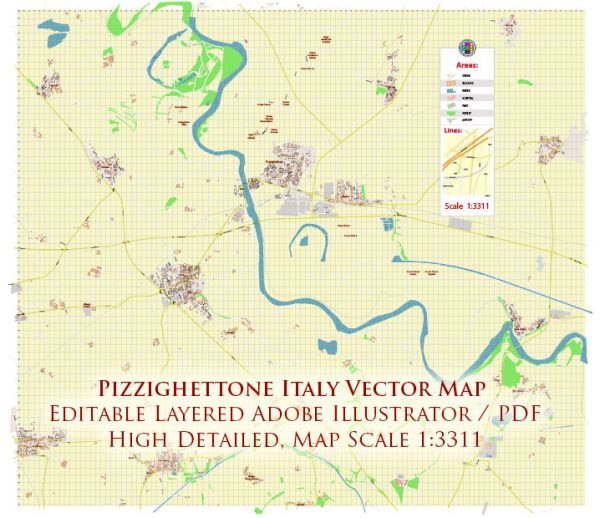Pizzighettone is a charming town located in the Lombardy region of northern Italy, and it is known for its rich history and diverse architectural heritage. The town’s architecture reflects its historical significance and the various influences it has experienced over the centuries. Here is a description of the architectural features and styles you can find in Pizzighettone:
- Medieval Walls and Fortifications: Pizzighettone is renowned for its well-preserved medieval walls and fortifications. The town is situated on the banks of the Adda River, and its walls were originally built to protect it from potential threats. These fortifications include imposing stone walls, towers, and gates, which add a sense of medieval charm to the town.
- Piazza Garibaldi: The heart of Pizzighettone, Piazza Garibaldi, is a picturesque square that is surrounded by historic buildings. The square itself is often used for local events and festivals, making it a vibrant center of community life.
- Religious Architecture: Pizzighettone is home to several historic churches, each with its unique architectural style. The Church of Santa Maria Assunta, for instance, boasts a beautiful Baroque facade, while the Church of San Bassiano showcases Gothic elements. These churches are not only places of worship but also architectural gems that provide a glimpse into the town’s spiritual and artistic heritage.
- Renaissance and Baroque Palaces: Throughout Pizzighettone, you’ll find elegant palaces and noble residences that reflect the town’s prosperity during the Renaissance and Baroque periods. These buildings often feature grand facades with intricate details, such as frescoes and decorative elements.
- Riverside Promenade: The town’s location on the Adda River offers a charming riverside promenade with picturesque views. Along this promenade, you can find quaint houses and bridges that add to the town’s scenic appeal.
- Medieval Streets and Alleys: Pizzighettone’s narrow, winding streets and alleys are lined with well-preserved medieval and Renaissance buildings. These streets are a delight to explore on foot, allowing visitors to immerse themselves in the town’s history and architecture.
- Castle of Pizzighettone: The Castle of Pizzighettone is a prominent architectural feature in the town. It has a medieval origin and played a strategic role in the past. Today, parts of the castle have been converted into a museum, where you can learn more about the history of the town.
Overall, Pizzighettone’s architecture provides a glimpse into its rich history, ranging from medieval fortifications to Renaissance and Baroque influences. The town’s well-preserved structures and charming streets make it a delightful destination for history enthusiasts and those seeking to explore the beauty of Italian architecture.


 Author: Kirill Shrayber, Ph.D.
Author: Kirill Shrayber, Ph.D.